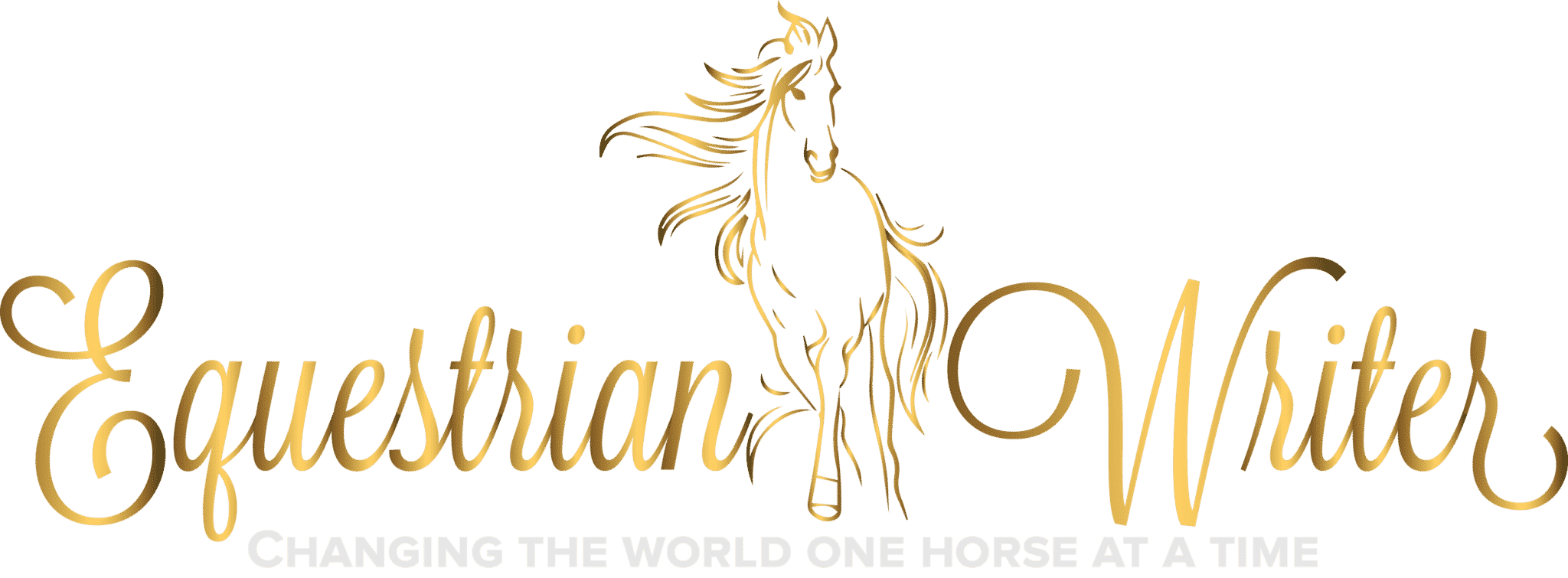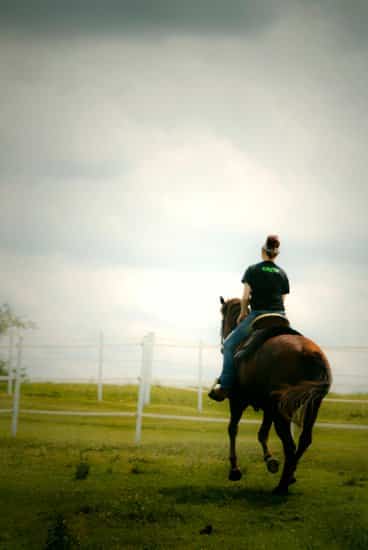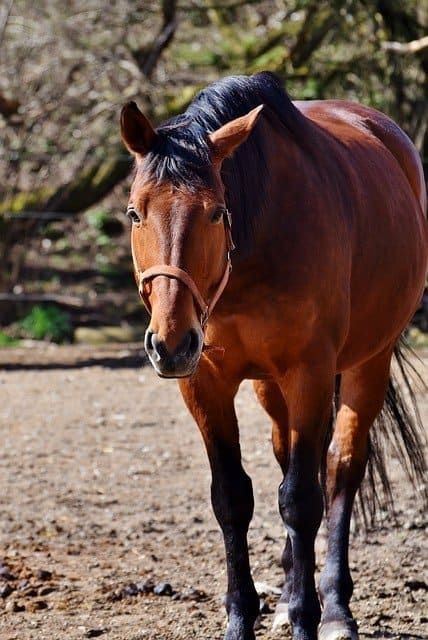
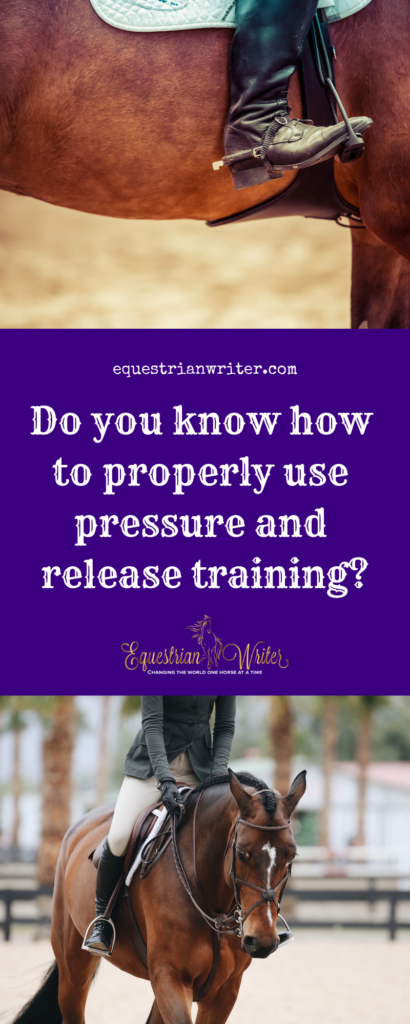
You’ve probably heard about pressure and release training at some point. It’s become all the rage with this “natural horsemanship” movement. However, this is a very misunderstood method of training.
The common understanding of pressure and release training puts the emphasis on applying pressure and rewarding with a release. In fact, the most effective application of pressure and release training is to use pressure to encourage the horse to seek release. They are two opposite philosophies; moving away from pressure versus moving into release.
The Nature of Horses
The common understand of pressure and release–moving away from pressure and rewarding with release–forgets to take into account the very nature of the horses we are attempting to train. Horses are prey animals. They are hardwired to move away from pressure. Therefore, it might seem logical at first glance to capitalize on this nature when training the horse. However, a horse’s natural survival instincts tell him to react to pressure via fight or flight.
Inviting Confrontation
In nature, survival depends on fleeing at the first sign of danger. If flight is not an option, fight instincts kick in. Danger is pressure. Pressure is danger. Fight or flight. When we are training a horse, the horse is trapped. Flight is generally not an option, so fight instincts kick in. Focusing on applying pressure is inviting confrontation. This is why so many “natural horsemanship” methods look impressive on their fancy DVDs but are so difficult to emulate in real life. They are “natural” in the sense that they are purely predatory from the horse’s point of view. However, they are not “natural” in the context touted by acolytes of the natural horsemanship fad. Natural horsemanship practitioners claim to be all about working with the horse when, in fact, applying pressure works against the horse.
The Giant Release
When your focus is on applying pressure, your release must be big enough to feel like a reward for the horse. This is why pressure and release training calls for a huge release, often going so far as to have you drop the rein all together. It’s like you’ve taken the pressure from 0 to 60 and now for the horse to feel the reward you’ve got to take it back down to 0 again. This huge fluctuation in pressure can be quite unnerving for many horses. You are essentially asking the horse to switch his natural prey fight or flight instincts on and off at your whim. Many horses can’t handle that.
This is a brute force approach. It does not generally work well for fine tuning high level show horses or horses that coming with “sensitive”, “spooky”, or “difficult” warning labels.
It is the release that hold the answer to training your horse. Release is not just a reward. Release is where all the training happens.
Lunging
A prime example of the disparity between the two methods is lunging. Lunging is the basis of any training method–natural horsemanship, dressage, or otherwise. The method of lunging taught by many natural horsemanship trainers is to drive the horse away from you and establish “impulsion” from the very beginning. Here, faster is better. You are encouraged to get the horse to canter as quickly as possible. Trotting is acceptable but cantering is preferred. The theory is that moving the horse’s feet creates respect for you as the leader of the herd. There is, however, one inherent flaw. You are chasing the horse.
From the horse’s perspective, you are screaming at him; “run away from me! I am a dangerous predator!” Remember, horses do not communicated verbally. From our perspective, we are commanding them firmly and calmly. But horses communicate through body language, a language of silence. They aren’t cantering because we command them to. They are cantering because mother nature is screaming in their ear; “run for your life.” So they run and we pat ourselves on the back for being such great horse trainers and achieving such natural harmony with our horses.

Related Article: The Language of Silence: Understanding Equine Communication
A Lesson in Pressure
As with so many other things, it is my mare Moose that taught me this lesson the hard way. I was in a natural horsemanship phase when I got her as an unbroke 6-year-old. I had used some natural horsemanship with previous horses with positive results. But Moose was skittish, completely shut down, and not having any of it. She couldn’t handle the pressure. I tried to lunge her the same way I had successfully done several other horses and she completely shut down on me. No amount of troubleshooting guides helped. The same methods that had worked so well with previous horses turned her into a sweaty, terrified, mess. I had to turn to more subtle, classical, methods to get through to her. She’s the one who got me into classical dressage.
Classical Lunging
Classical lunging is the exact opposite of the heavy handed natural horsemanship methods. This method of lunging starts at the walk and works it’s way up. It builds a solid foundation at each gait before moving to the next. While horses may run a bit crazy in the beginning, classical techniques call for you to simply wait the horse out. If the horse wants to canter, let the horse canter, but keep your body position neutral and relaxed. Open the door for the horse to walk and relax, but let the horse figure it out and find his own way through it. Don’t force him to do anything. Eventually, the horse will figure out the cantering doesn’t achieve anything. No one is chasing him. There is no pressure.
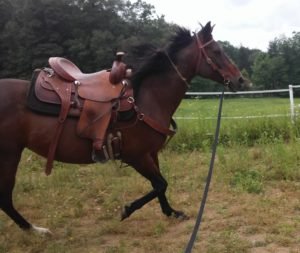
The horse will eventually slow to a trot. There will still be no pressure. You stay neutral. The door is still open for him to walk. It can take anywhere from 2 to 20 minutes for the horse to figure out that no one is pressuring him to do anything. Once he figures that out on his own though, it usually doesn’t take that long for him to come down to a walk. Then, he will find no pressure at the walk either.
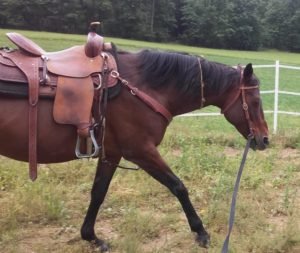
In this scenario, he found his own release. You did not rewarded him with release. He found it all by himself. You set him up to logic his way through the situation until he found the release he was looking for. He was putting pressure on himself, not the other way around.
Related Article: A Step-by-Step Guide to Classical Lunging
Once the horse has found release at the walk consistently over a few sessions, you can begin applying minimal amounts of pressure in order to encourage correct movement at the walk. However, this pressure should be doled out in small doses.
This is were the misunderstanding of pressure and release training happens. Horses are used to communicated with each other through pressure in a herd. That is how they get other herd member to move out of their space. In this way, using pressure to train a horse is natural. But we need to be aware of how much pressure we are using. Horses communicate through subtle amounts of pressure. As we have discussed before, if you want to achieve true softness with your horse, you must start out with soft, subtle cues. Horses appreciate a quiet, soft rider. They do not appreciate a predatory human who “screams” at them and chases them in circles.
Creating a Responsive, Thinking Horse
If you are in a competition environment or out on a trail, you want a horse who is focused and attentive. Using brute force training methods that pile on the pressure and overload the horse’s natural fight or flight instinct makes the horse dull and unresponsive. To the untrained eye these horses look well trained because they can be ridden by anyone, but that is only because they have become so dull from these brute force methods.
It is vitally important to minimize the pressure and set the horse up to find his own release. It is all about teaching the horse to think his way through the problem.
Related Article: Teaching a Horse to Learn
